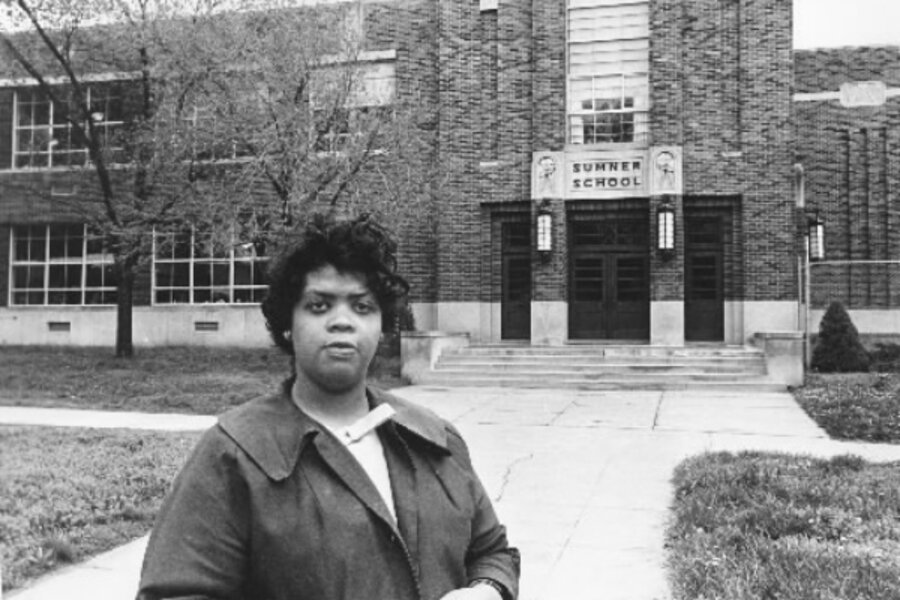Discussing Race: The pitfalls of racial 'colorblindness' and the importance of talk
Loading...
“Now, I don’t see race. People tell me I’m white and I believe them,” late night satirist Stephen Colbert frequently tells his guests. He isn’t the only one claiming to be racially “colorblind.” Since the days of the civil rights movement, many parents and teachers have adopted this approach with the hope that by simply refusing to point out differences to their children, racism, stereotyping, and bigotry would just fall away.
Instead, “in this supposed racial vacuum created by parents, the kids have been left to come up with their own conclusions based on who knows what. Their own observations? Heresay? Who knows?” said Janie Ward, Simmons College Professor and Department Chair of Africana Studies and author of The Skin We’re In: Teaching Our Teens to be Emotionally Strong, Socially Smart, and Spiritually Connected.
According to recent research, many of those conclusions have not been good.
Ward shared the results of a recent University of Texas study on racial attitudes with a group of parents and teachers gathered for a lunch, lecture, and book signing as part of The Boston Children’s Museum’s Lunch and Learn Lecture Series this week.
UT researchers initially set out to assess the impact of multicultural characters in television programs on white children’s attitudes about race. They solicited hundreds of families to participate in the study and gave the children an initial racial attitude test. They asked the children questions like, “Are white people nice,” and “Are black people nice?” They followed up with additional questions and substituted the adjective “nice” with other adjectives, including “pretty,” “mean,” and “smart.” This was intended to be a base line measurement of children’s racial attitudes.
Then the researchers divided the families into three groups. They sent one group home with a video that included an episode of Sesame Street where the cast members visited a black family at home. They gave the second group the same video, as well as a list of talking points for parents to use in discussing the video with their kids. The third group took home just the talking points.
However, the researchers soon realized that something was wrong.
Many parents balked at the idea of raising the discussion of race with their kids. Five parents refused to participate entirely. Several indicated that the idea of having such a discussion with their kids was scary. Others said they preferred to raise their children to be “colorblind.” So the researchers shifted the direction of the study to examine the effect of “colorblind” child rearing on children’s actual racial attitudes.
When the researchers returned to the results of the original study that they had already given the kids, they discovered that the children were forming their own ideas about race. When asked how many white people are mean, almost all of the kids responded “almost none.” When asked how many black people are mean, many answered “a lot.” When asked about their parents' attitudes toward black people, 14 percent of kids said that their parents did not like black people and 38 percent of kids said they did not know how their parents felt. While the parents have been trying to impart “colorblindness,” the kids have still developed white biases, Ward said.
Similar studies where researchers have asked black children to point out which of two dolls — one white and one black — is nicer, smarter, prettier have shown that black children also harbor white biases. The first of these studies proved instrumental during the landmark Brown v. Board of Education court case that resulted in the desegregation of public schools. Many things have changed since then. However, many black kids still identify the black doll as “bad” and “mean” and label the while doll as “nice” and “pretty.”
That lack of ethnic pride is particularly troubling, Ward said. “Ethnic pride is about a whole lot more than just feeling good,” she said. In her research, Ward has found that children’s sense of ethnic pride can affect both their grades and their mental health. Further, she found that teenagers with a strong sense of ethnic pride were able to navigate social inequities more effectively than kids that harbor feelings of shame about their ethnicity.
Parents can start to foster ethnic pride at a very young age. Ward offered the example of one mother who used the opportunity of brushing her child’s hair to plant the seeds of ethnic pride. “Your hair is so beautiful. Other kids have different kinds of hair, but your hair is just like Mummy’s hair and grandma’s hair,” she would tell her daughter. Ward asked the mother why she felt this was so important. “As a black woman in this society I know what my daughter is going to be up against. I’m giving my daughter the tools now that she will need to do battle when she gets older,” the mother responded.
Ward urged parents to talk to their children about race throughout their childhood. “I know that this kind of conversation can be a scary conversation, but the more you talk, the better you get at it. It’s not just about one conversation, it’s about talking about these kinds of things over time and being on the lookout for teachable moments,” she said.






